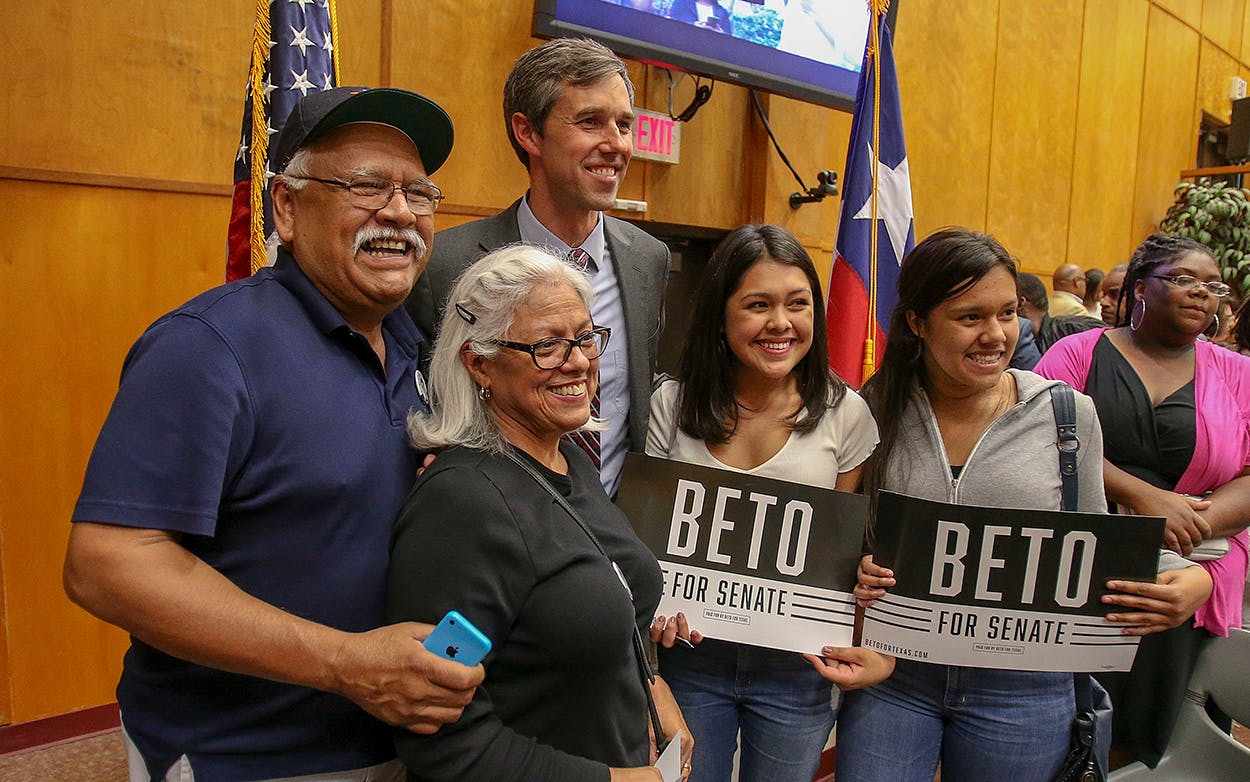You can ignore the horse race poll numbers in the Texas contests for U.S. Senate and governor because incumbent Republicans Ted Cruz and Greg Abbott are easily ahead. Far more important in the new Quinnipiac University Poll of Texans is that half the state’s voters still know little to nothing about Democratic challengers Beto O’Rourke and Lupe Valdez. If the election were today, O’Rourke and Valdez would get thrashed.
Fortunately for O’Rourke, he already has more than $8 million in the bank and eventually can use it to boost his name identification among the general electorate. But ever since the April Quinnipiac survey found O’Rourke trailing Cruz by three percentage points—47 percent for Cruz to 44 percent for O’Rourke—the congressman from El Paso has been using the idea that this is a neck and neck race to raise more money. But again, as I noted then, when that survey came out, Texans did not know who O’Rourke was and his number reflected what any generic Democrat should get in a similar survey at that point in the race. Now, O’Rourke is going to have to explain how he dropped five percentage points while Cruz gained three points, making the race 50 percent for Cruz to 39 percent for O’Rourke. The simple answer is that when Cruz secured the Republican nomination for another term of office, it allowed him to start defining O’Rourke as a liberal. But O’Rourke has room to maneuver. Self-described independent voters held an unfavorable view of Cruz and favored a vote for O’Rourke by 43 percent to 41 percent. A downside for O’Rourke, however, is that the state’s Hispanic voters favor Cruz by a margin of 46 percent to 44 percent.
The news for Valdez is even worse. In the April survey, 65 percent of the state’s voters did not know enough about the former Dallas County sheriff to have an opinion of her. The party runoff with Houston businessman Andrew White reduced her lack of identification to 53 percent, but the negative view of Valdez grew in almost every demographic group except among black voters. By contrast, Abbott is viewed positively by every demographic group except Democrats. Even among Hispanics, Abbott was viewed favorably by 42 percent to 26 percent negatively. Given how much time Democrats have spent criticizing Abbott over his sanctuary cities law to force local law enforcement to cooperate with federal immigration authorities, this positive rating among Hispanics would either indicate the message is not sinking in or is not effective.
At present, in the horse race, Abbott leads Valdez 53 percent to 34 percent. Abbott won the 2014 election over Democrat Wendy Davis by a margin of 59 percent of the vote to 39 percent. Without a substantial increase in her funding, Valdez may face an even worse defeat in November.
The bright spot for Democrats is dissatisfaction with President Trump in Texas makes a comeback for either O’Rourke or Valdez possible. The favorable/unfavorable on Trump right now is tied at 47 percent for either side. But Trump is upside down with independents—54 percent unfavorable to 40 percent favorable—as well as with voters under the age of 50. White voters still hold a favorable view of Trump, but his negatives are heavy among black and Hispanic voters.
As a political journalist, I hate to see these results because close contests are always more fun to cover, but also because lopsided races discourage democratic participation. (That’s democratic with a small D.) As we saw in the record 1.5 million Republican primary turnout and the 1 million votes cast in the Democratic primary—the most that party has seen since it last won a statewide election in 1994—contested races bring voters to the polls. Close contests force candidates to preach to the congregation, not just to the choir.
The survey of 961 Texas voters was conducted May 23-29 and had a margin of error of plus or minus 3.8 percentage points. For more details on the Quinnipiac survey and how it was conducted, please go here.
- More About:
- Politics & Policy
- Ted Cruz
- Lupe Valdez
- Greg Abbott
- Beto O'Rourke






